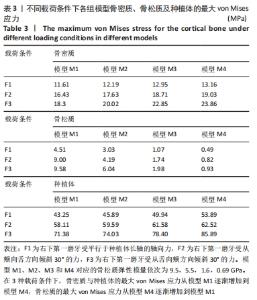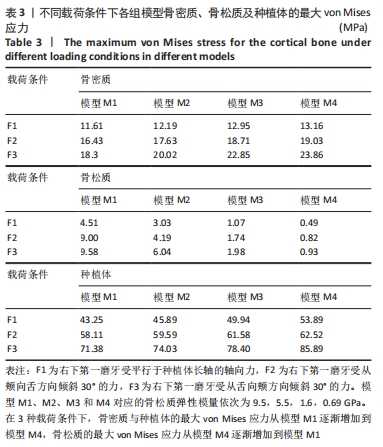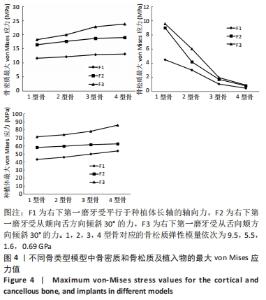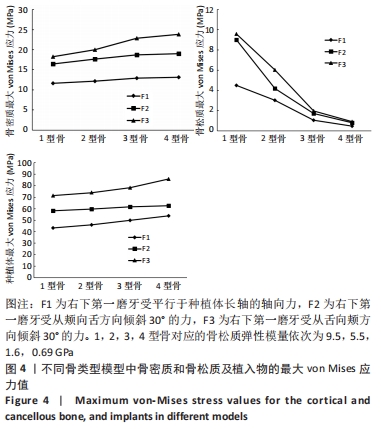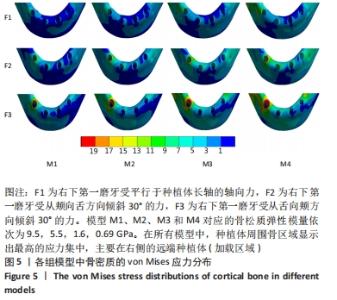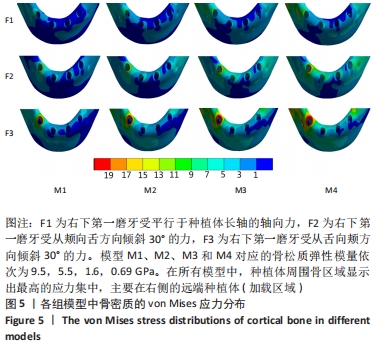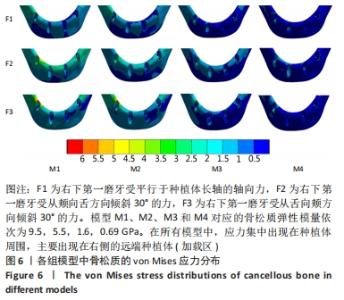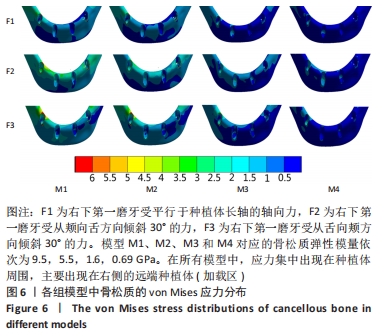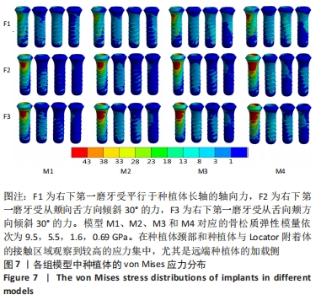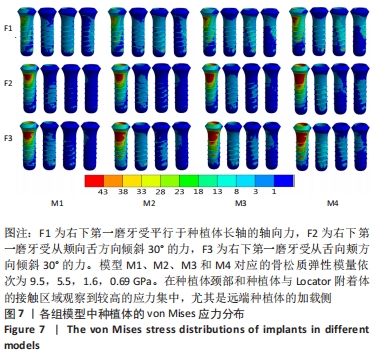[1] SOTO-PENALOZA D, ZARAGOZÍ-ALONSO R, PENARROCHA-DIAGO M, et al. The all-on-four treatment concept: Systematic review. J Clin Exp Dent. 2017;9(3):e474-e488.
[2] AZCARATE-VELÁZQUEZ F, CASTILLO-OYAGÜE R, OLIVEROS-LÓPEZ LG, et al. Influence of bone quality on the mechanical interaction between implant and bone: A finite element analysis. J Dent. 2019; 88:103161.
[3] DE ALMEIDA EO, ROCHA EP, FREITAS AC, et al. Finite element stress analysis of edentulous mandibles with different bone types supporting multiple-implant superstructures.Int J Oral Maxillofac Implants. 2010; 25(6):1108-1114.
[4] LEHKHOLM U, ZARB GA. Patients selection and preparation. Branemark, P-I. Tissue Integrated Prosthesis Osseointegration in Clinical Dentistry, 1985:199-209.
[5] LINKOW LI, RINALDI AW, WEISS WW, et al. Factors influencing long-term implant success. J Prosthet Dent. 1990;63(1):64-73.
[6] BASS SL, TRIPLETT RG. The effects of preoperative resorption and jaw anatomy on implant success. A report of 303 cases. Clin Oral Implants Res. 1991;2(4):193-198.
[7] SEVIMAY M, TURHAN F, KILICARSLAN MA, et al. Three-dimensional finite element analysis of the effect of different bone quality on stress distribution in an implant-supported crown.J Prosthet Dent. 2005;93(3): 227-234.
[8] ISIDOR F. Influence of forces on peri-implant bone. Clin Oral Implants Res. 2006;17 Suppl 2:8-18.
[9] LEUNG KC, CHOW TW, WAT PY, et al. Peri-implant bone loss: management of a patient. Int J Oral Maxillofac Implants. 2001;16(2): 273-277.
[10] JAFFIN RA, KUMAR KA, BERMAN CL. Immediate loading of dental implants in the completely edentulous maxilla: a clinical report. Int J Oral Maxillofac Implants. 2004;19(5):721-730.
[11] TABATA LF, ROCHA EP, BARÃO VA, et al. Platform switching: biomechanical evaluation using three-dimensional finite element analysis. Int J Oral Maxillofac Implants. 2011; 26(3):482-491.
[12] SHAPURIAN T, DAMOULIS PD, REISER GM, et al. Quantitative evaluation of bone density using the Hounsfield index. Int J Oral Maxillofac Implants. 2006;21(2):290-297.
[13] DRAGE NA, PALMER RM, BLAKE G, et al. A comparison of bone mineral density in the spine, hip and jaws of edentulous subjects. Clin Oral Implants Res. 2007;18(4):496-500.
[14] FAVERANI LP, BARAO VA, RAMALHO-FERREIRA G, et al. The influence of bone quality on the biomechanical behavior of full-arch implant-supported fixed prostheses. Mater Sci Eng C Mater Biol Appl. 2014; 37:164-170.
[15] TADA S, STEGAROIU R, KITAMURA E, et al. Influence of implant design and bone quality on stress/strain distribution in bone around implants: a 3-dimensional finite element analysis. Int J Oral Maxillofac Implants. 2003;18(3):357-368.
[16] HUANG HL, HSU JT, FUH LJ, et al. Bone stress and interfacial sliding analysis of implant designs on an immediately loaded maxillary implant: a non-linear finite element study. J Dent. 2008;36(6):409-417.
[17] PESSOA RS, VAZ LG, MARCANTONIO E, et al. Biomechanical evaluation of platform switching in different implant protocols: computed tomography-based three-dimensional finite element analysis. Int J Oral Maxillofac Implants. 2010;25(5):911-919.
[18] LIAO SH, TONG RF, DONG JX. Influence of anisotropy on peri-implant stress and strain in complete mandible model from CT. Comput Med Imaging Graph. 2008;32(1):53-60.
[19] LIU J, PAN S, DONG J, et al. Influence of implant number on the biomechanical behaviour of mandibular implant-retained/supported overdentures: a three-dimensional finite element analysis. J Dent. 2013;41(3):241-249.
[20] SARRAFPOUR B, SWAIN M, LI Q, et al. Tooth eruption results from bone remodelling driven by bite forces sensed by soft tissue dental follicles: a finite element analysis. PLoS One. 2013;8(3):1-10.
[21] CRUZ M, WASSALL T, TOLEDO EM, et al. Finite element stress analysis of dental prostheses supported by straight and angled implants. Int J Oral Maxillofac Implants. 2009;24(3):391-403.
[22] CRUZ M, WASSALL T, TOLEDO EM, et al. Three-dimensional finite element stress analysis of a cuneiform-geometry implant. Int J Oral Maxillofac Implants. 2003;18(5):675-684.
[23] DEGIDI M, PIATTELLI A. Immediate functional and non-functional loading of dental implants: a 2- to 60-month follow-up study of 646 titanium implants. J Periodontol. 2003;74(2):225-241.
[24] CHIAPASCO M. Early and immediate restoration and loading of implants in completely edentulous patients. Int J Oral Maxillofac Implants. 2004; 19 Suppl:76-91.
[25] YOKOYAMA S, WAKABAYASHI N, SHIOTA M, et al. Stress analysis in edentulous mandibular bone supporting implant-retained 1-piece or multiple superstructures. Int J Oral Maxillofac Implants. 2005;20(4): 578-583.
[26] BARAO VA, DELBEN JA, LIMA J, et al. Comparison of different designs of implant-retained overdentures and fixed full-arch implant-supported prosthesis on stress distribution in edentulous mandible--a computed tomography-based three-dimensional finite element analysis. J Biomech. 2013;46(7):1312-1320.
[27] ESKITASCIOGLU G, USUMEZ A, SEVIMAY M, et al. The influence of occlusal loading location on stresses transferred to implant-supported prostheses and supporting bone: A three-dimensional finite element study. J Prosthet Dent. 2004;91(2):144-150.
[28] GRANT BT, PANCKO FX, KRAUT RA. Outcomes of placing short dental implants in the posterior mandible: a retrospective study of 124 cases. J Oral Maxillofac Surg. 2009;67(4):713-717.
[29] ROBERTS WE, GOODACRE CJ. The Temporomandibular Joint: A Critical Review of Life-Support Functions, Development, Articular Surfaces, Biomechanics and Degeneration. J Prosthodont. 2020;29(9):772-779.
[30] GENG JP, TAN KB, LIU GR. Application of finite element analysis in implant dentistry: a review of the literature. J Prosthet Dent. 2001; 85(6):585-598.
[31] PI X. Oral anatomy and physiology . 7th ed. Beijing:People’s Medical Publishing House, 2004:314-318.
[32] GOTFREDSEN K, BERGLUNDH T, LINDHE J. Bone reactions adjacent to titanium implants subjected to static load of different duration. A study in the dog (III).Clin Oral Implants Res. 2001;12(6):552-558.
[33] DAAS M, DUBOIS G, BONNET AS, et al. A complete finite element model of a mandibular implant-retained overdenture with two implants: comparison between rigid and resilient attachment configurations. Med Eng Phys. 2008;30(2):218-225. |
